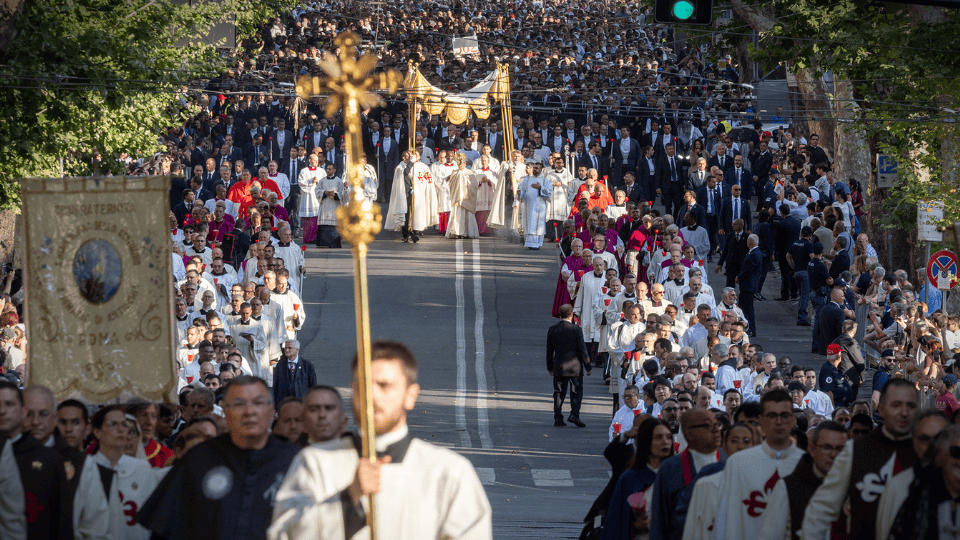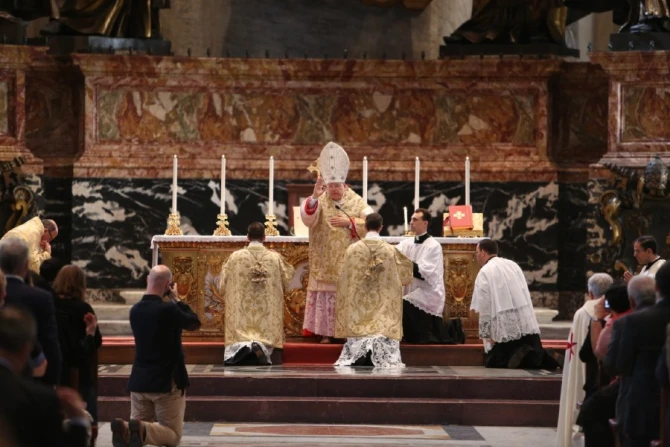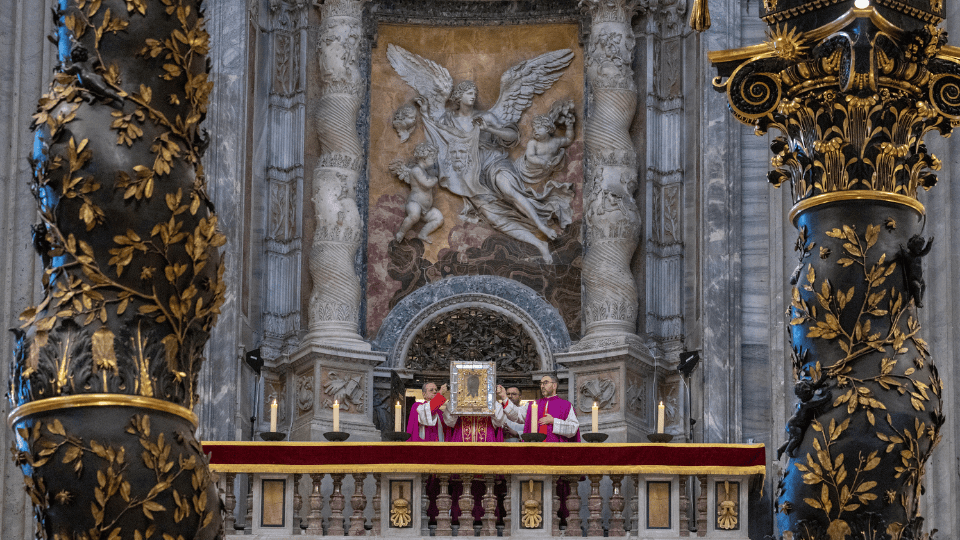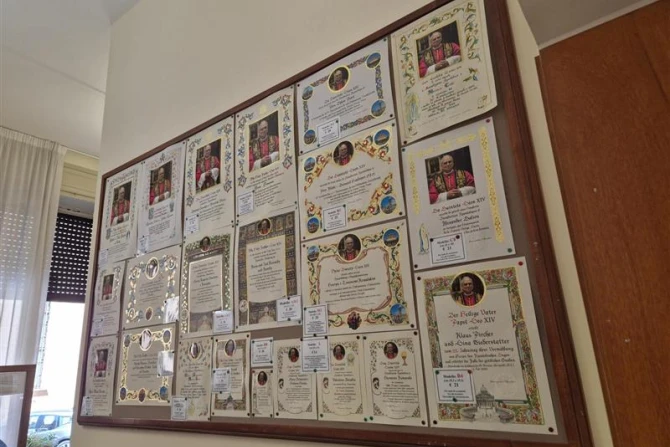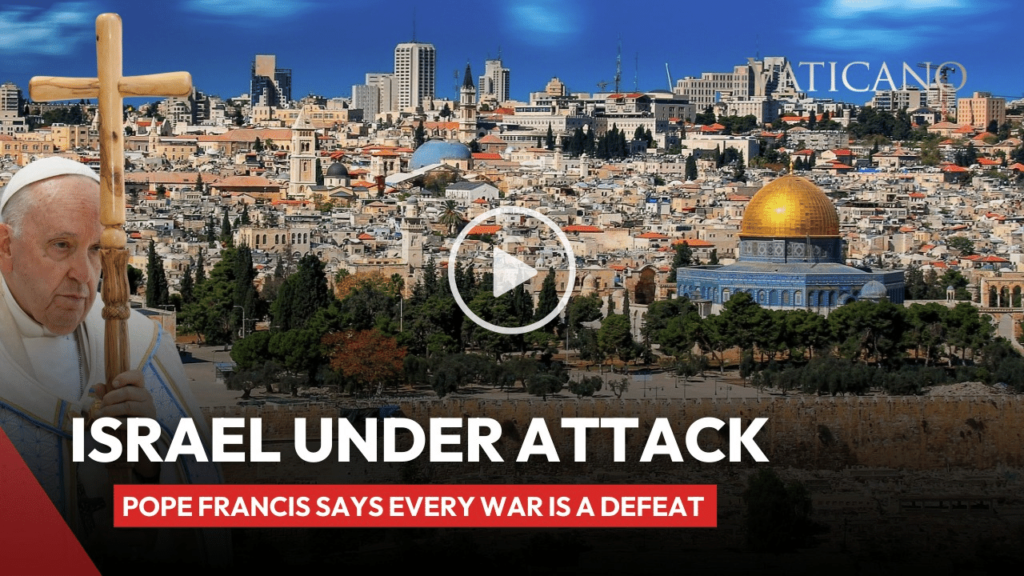It is one of the most beautiful and evocative liturgical celebrations to take place in the streets of Rome. The Corpus Domini procession—like the one led by Pope Leo XIV last Sunday—traces its origins to an event nearly 800 years ago in the medieval lakeside town of Bolsena, about 100 kilometers north of Rome. It was there, in 1263, that the Eucharistic miracle occurred bringing about this liturgical feast throughout the Universal Church.
SIGN UP FOR OUR NEWSLETTER HERE
A Bohemian priest Peter gripped by doubts about the Real Presence of Jesus in the consecrated Host was celebrating Mass in the basilica of Saint Cristina when suddenly, at the moment of consecration the Host began to bleed.
After a thorough investigation, Pope Urban IV ordered that the Host and altar cloth stained miraculously with the Precious Blood be brought to Orvieto and put on display for public view.
Just a year later, in 1264, Pope Urban extended the feast of Corpus Domini to the entire Catholic world with the bull “Transiturus de hoc mundo.” Since then, Eucharistic processions on the feast of Corpus Christi have been held throughout the world.
Fr. Dominik Jurczak, Dean of the Faculty of Theology at Angelicum, Rome, explained:
“Of course, the procession is not part of the dogma, it’s not that if we don’t organize a procession, the world will collapse or the Catholic Church will collapse. That’s not how this feast should be interpreted. On the other hand, the procession is indeed part of our celebration. It is a bit like how we prepare various big celebrations in the family, or we prepare for important moments in our lives. Well, then we want to celebrate.”
In past centuries the solemn procession, always presided over by the Vicar of Christ, used to be held in the Vatican.
Vatican Guide and Historian Patrizia Sestili noted, “It was always done in the area of St. Peter’s Square. And before Bernini built the big wings of the Colonnade, the procession took place in this kind of square that was there, then it would be organized within the perimeter of the colonnade going all the way up to Porta Castello. The colonnade was decorated. There were the tapestries, for example, made by Raphael, which are still part of the Vatican collections. They were all put on display to create this festive decoration.”
Nowadays a colorful procession stretches along the famous via Merulana at the heart of Rome. It was Saint John Paul II who decided to move the tradition of Corpus Domini from the Vatican to the Streets of Rome.
Sestili explained, “At the beginning of his pontificate, he decided to bring the procession here, starting from the Basilica of St. John Lateran, which is the cathedral of Rome and going up to St. Mary Major. The pope desired to bring back this liveliness of the feast outside the Vatican walls, to bring it back to the people, to make it a part of the popular sentiment.”
For the people of Rome walking with the consecrated Host in the procession of Corpus Domini is the expression of their devotion and of their faith in the Eucharist.
Fr. Jurczak highlighted, “With the Corpus Christi procession we emphasize the importance of the Presence of Christ in the Blessed Sacrament, we go out into the streets, we go out with the Blessed Sacrament, because we believe that in this host and wine, it is not just bread and wine, but it is Christ Present under the appearance of bread and wine.”
In recent years, in an exceptional way, the Corpus Domini procession was brought to the outskirts of Rome. In 2018 and 2019 Pope Francis presided over the celebration in Casal Bertone and in Ostia, far from the traditional route of Saint John Lateran and Saint Mary Major, to draw the eyes of the world to the peripheries and their people.
Now Pope Leo brings this tradition back to the Eternal City.
And takes opportunities to address the people of Rome and the entire world with his message:
“As Saint Augustine writes, Christ is truly “panis qui reficit, et non deficit; panis qui sumi potest, consumi non potest”: he is bread that restores and does not run short; bread that can be eaten but not exhausted. The Eucharist, in fact, is the true, real, and substantial presence of the Saviour, who transforms bread into himself in order to transform us into himself. Living and life-giving, the Corpus Domini makes us, the Church herself, the Body of the Lord.”
FIND THE POPE’S BIOGRAPHY HERE
Adapted by Jacob Stein

